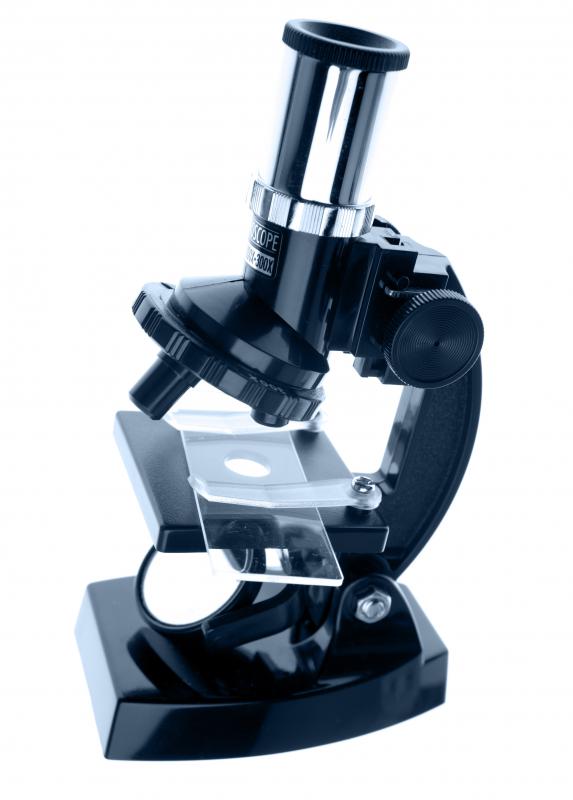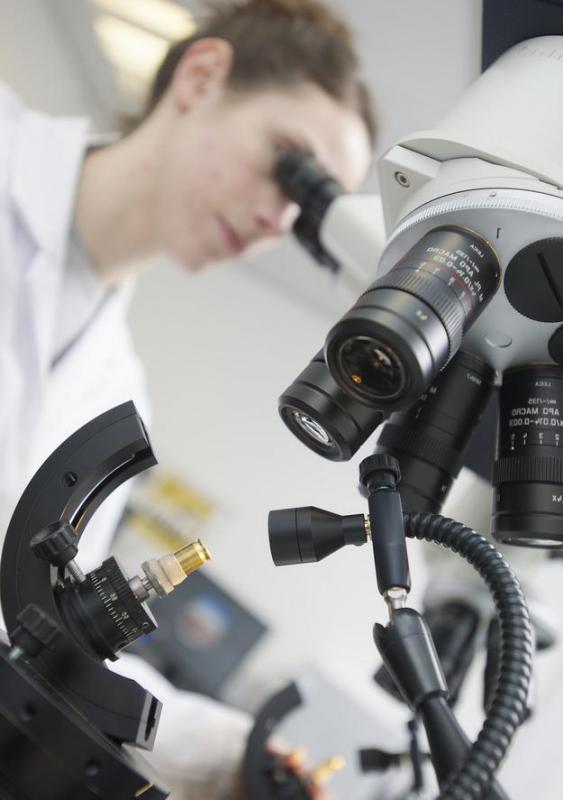At EasyTechJunkie, we're committed to delivering accurate, trustworthy information. Our expert-authored content is rigorously fact-checked and sourced from credible authorities. Discover how we uphold the highest standards in providing you with reliable knowledge.
What are the Different Types of Microscopes?
Microscopes are used both in classrooms and in making important evaluations in medical laboratories and other microtechnologies. The different types are designed for these different uses, and therefore will vary based on their resolution, magnification, depth of field, field of view, illumination method, degree of automation, and type of image they produce. There are essentially three categories of microscope: electron, confocal, and compound.
Electron microscopes are extremely sophisticated magnification devices. These are used in archaeology, medicine, and geology to look at surfaces and layers of objecs such as organs and rocks. Instead of using light, these devices point a stream of electrons at the specimen and attached computers analyze how the electrons are scattered by the material. The specimen must be suspended within a vacuum chamber.

With transmission electron microscopes, a scientist gets a view of 2-D slices of the object at different depths. Of course, with such powerful instruments, both the degree of magnification and the resolution, or sharpness of the image, are very high. Scanning electron microscopes are slightly different in that they scan a gold-plated specimen to give a 3-D view of the surface of an object. This view is in black and white, yet gives an amazing picture of, for example, the minute hills and valleys of a dinosaur bone.

A confocal microscope is a step down from the previous types. It uses a laser beam to illuminate a specimen, the image of which is then digitally enhanced for viewing on a computer monitor. The specimen is often dyed a bright color so the laser gives a more contrasting image. It is mounted on a glass slide just like in high school biology. These devices are controlled automatically, and motorized mirrors help with auto-focus.

The simplest types are found in classrooms across the world: compound microscopes. These are entirely operated by hand and use the ordinary ambient light from the sun or a light bulb to illuminate the specimen. Whatever a user wants to look at is mounted between two glass slides and clipped beneath the main lens, and he uses a dial to focus the image. These tools use a simple series of magnifying lenses and mirrors to bring the image up to an eyepiece, much like a telescope.

Compound microscopes are mostly used in biology. They give a 2-D slice of an object, yet can attain a high enough magnification to see parts of eukaryotic cells, a hair strand, or pond scum. Unfortunately, they do not have excellent resolution, so the image may be blurry. Stereoscopic microscopes, as the name implies, provide a 3-D picture of bisected items, like muscle tissue or an organ. In this case, magnification is poor, so the viewer can't make out separate cells, but resolution is much improved.
AS FEATURED ON:
AS FEATURED ON:
















Discussion Comments
It was probably a mini version of one of the microscopes above. I said probabaly, not definite. Or it could be some version of microscope that only a small number of them were made. I seriously don't know.
When i was younger, i had another type of microscope: a pocket microscope. you could carry it around with you in a pocket and closely investigate things in the field.
Post your comments